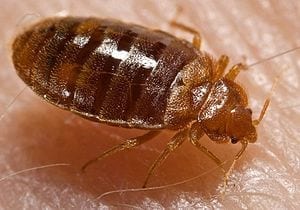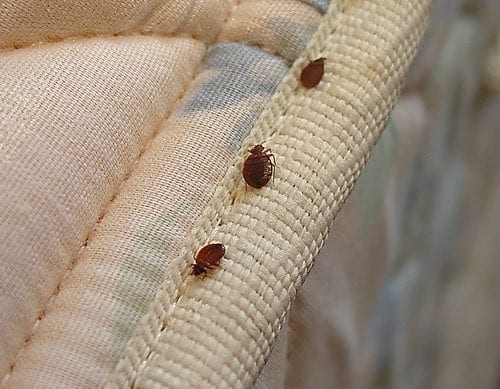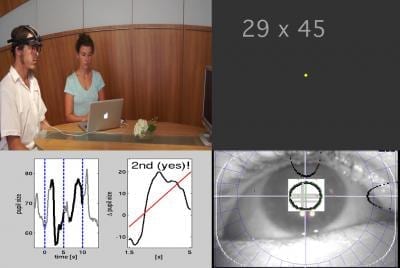
If you suspect you might be unlucky enough to have the critters, you can buy an expensive test, or you can follow these instructions to make one yourself that both costs less and works better.
What has six legs, lives on blood, and strikes fear into the hearts of mattress-owners everywhere? According to the National Pest Management Association, bed bug infestations peak during the summer months, and some 99.6% of exterminators have seen at least one in the past year. They’re also expensive as hell, and notoriously difficult to treat, let alone detect.
For those of you who cross the street to avoid old couches propped up against a fire hydrant, here’s something for you: A new bed bug trap described in a Rutgers University study and published in the Journal of Economic Entomology shows that it’s fairly simple to set up a more effective and cheaper bed bug monitor than what’s currently on the market–and you can likely get most of the ingredients from your local drug store.
Changlu Wang, an entomologist at Rutgers University and assistant extension specialist, found a set-up proven more than twice as effective as bed bug detection kits currently on the market. His team needed to create a source of carbon dioxide, which bed bugs are attracted to, so they used a combination of sugar, yeast, and water to generate the gas. (Other bed bug detection tools, Wang explained, often use expensive carbon dioxide cylinders, or dry ice—which is effective, but dangerous to touch.) With that mixture placed in a retrofitted dog bowl, Wang’s team also lined the trap with black surgical tape to make the trap more attractive to the bugs and easier to climb.
“Bed bugs are very, very hungry. Once you enter the room, you breathe CO2, and within a few minutes the bed bugs become active and look for you,” Wang explains. “They just follow the CO2 concentrations until they locate you. The CO2 released from yeast is identical–the only difference is humans release chemical odors,” he said.
The Latest Bing News on:
Bed Bugs
- How to fix homelessness bug in Manor Lordson April 26, 2024 at 11:30 am
build enough Burgage Plots saving, exiting, and reloading upgrade this plot into a Worker Camp five families ...
- Google Preps Fix for Bug That Exposes Gmail, Drive Accounts on Android TVson April 26, 2024 at 8:33 am
Gaining access to a Gmail account requires a few steps, but for someone eager enough to read your emails or Drive files, it's a relatively easy way to be a creep.
- Have you met Chicago’s Bug Girl? Janelle Iaccino wants to enlighten the city on the greatness of the creepy, crawly thingson April 26, 2024 at 3:00 am
When you think of the acronym STEM, you likely know it stands for science, technology, engineering and math. But does it make you think about bugs, rodentia and taxidermy? Janelle Iaccino thinks it ...
- ‘Red flag’: Bug splats on cars reveal a staggering drop in insect numbers over last 20 yearson April 25, 2024 at 9:00 pm
New research has discovered that the number of bugs across the United Kingdom has lessened by a concerning amount over the last two decades.
- Bed bug infestation in Buffalo public housingon April 25, 2024 at 2:48 pm
Senior residents say their apartments are overrun with bed bugs, cockroaches and rodents. The problems don't end there.
- Bug season is about to start: Helicopter to drop mosquito larvicide on swamp in Westerlyon April 25, 2024 at 12:03 pm
Trying to reduce cases of mosquito-borne illnesses this summer, the town of Westerly will apply a mosquito larvicide to Chapman Swamp on Monday.
- Lightning Bug – “Lullaby For Love”on April 25, 2024 at 11:49 am
New York indie rockers Lightning Bug dropped their album A Color Of The Sky on Fat Possum. Next week, they’ll follow that LP with the entirely self-released new one No Paradise. We’ve posted the early ...
- Video: Lightning Bug Shares Single Ahead of New Album Out Next Weekon April 25, 2024 at 9:23 am
Lightning Bug has shared their third and final single “Lullaby for Love”, from their forthcoming album No Paradise, out next week. The song is accompanied by a music video directed by Kit Zauhar and ...
- A bed bug infestation in Buffalo public housingon April 24, 2024 at 3:14 pm
Senior residents say their apartments are overrun with bed bugs, cockroaches and rodents. The problems don't end there.
- Grant’s Take: The Travel Bug Is Keeping the U.S. Economy Strongon April 24, 2024 at 1:30 am
The U.S. economy keeps humming along, and strong travel demand is a key reason why.
The Latest Google Headlines on:
Bed Bugs
[google_news title=”” keyword=”Bed Bugs” num_posts=”10″ blurb_length=”0″ show_thumb=”left”]
The Latest Bing News on:
Trapping bedbugs
- Parasitic wasps, vibrating traps and other ways science is trying to destroy the spotted lanternflyon April 27, 2024 at 3:01 am
PITTSBURGH — Science is catching up with the spotted lanternfly as researchers experiment with parasitic wasps, vibrating traps and other strategies to stop the colorful pest. Before the bug reached ...
- How to Use Traps in Bellwright, Bug Explainedon April 26, 2024 at 1:31 am
If your traps in Bellwright seem to not work, you might not be using them correctly. However, there is a good chance that there is a bug related to that. Let's see what's going on.
- Zap Guardian Review – Is It Worth It or Negative Fake Complaints?on April 26, 2024 at 1:30 am
Imagine this: a warm summer night, the perfect backyard hangout… until the mosquitoes show up. Buzzing in your ear, itchy bites everywhere—your evening is ruined! The usual solutions smell ...
- Bed bug infestation in Buffalo public housingon April 25, 2024 at 2:48 pm
Senior residents say their apartments are overrun with bed bugs, cockroaches and rodents. The problems don't end there.
- The Best Mosquito Repellents of 2024, Testedon April 25, 2024 at 12:27 pm
The latter can ruin your summer fun with constant swatting and eventual itching. Mosquito repellent can save the day, or it can leave you coated in smelly bug spray and still itching from bites. To ...
- Frenchtown Golf Course using mushrooms to solve bug problemon April 25, 2024 at 7:45 am
King Ranch Golf Course in Frenchtown was tired of bugging out over mosquitos on the green, so they turned to mushrooms to solve the problem.
- Bug season is coming: Prepare with this top-selling $15 indoor fly trap that uses zero chemicalson April 19, 2024 at 12:06 pm
This wildly popular bug bite remedy sucks out the venom and saliva that cause irritation, so as long as you use it soon after you've been bitten, it can minimize itching. It doesn't rely on chemicals ...
- Here's how to tell if your home might be infested with bed bugson April 19, 2024 at 3:44 am
If you suspect your home might be infested with bed bugs, don't panic. This guide will equip you with the knowledge to identify a bed bug infestation, understand the signs they leave behind ...
- Pesky bugs be gone! The Bug Zap Trap can banish bugs for only $25on April 17, 2024 at 12:00 pm
Discover startups, services, products and more from our partner StackSocial. New York Post may be compensated and/or receive an affiliate commission if you buy through our links. TL;DR: Mosquitos can ...
- Mozz Guard Reviews: Does This Portable Bug Zapper Really Work?on April 16, 2024 at 5:36 pm
Discover a mosquito-free summer with Mozz Guard, the portable bug zapper with advanced UV technology. Enjoy 14+ hours of protection with our rechargeable, chemical-free device—safe for kids and pets!
The Latest Google Headlines on:
Trapping bedbugs
[google_news title=”” keyword=”trapping bedbugs” num_posts=”10″ blurb_length=”0″ show_thumb=”left”]




